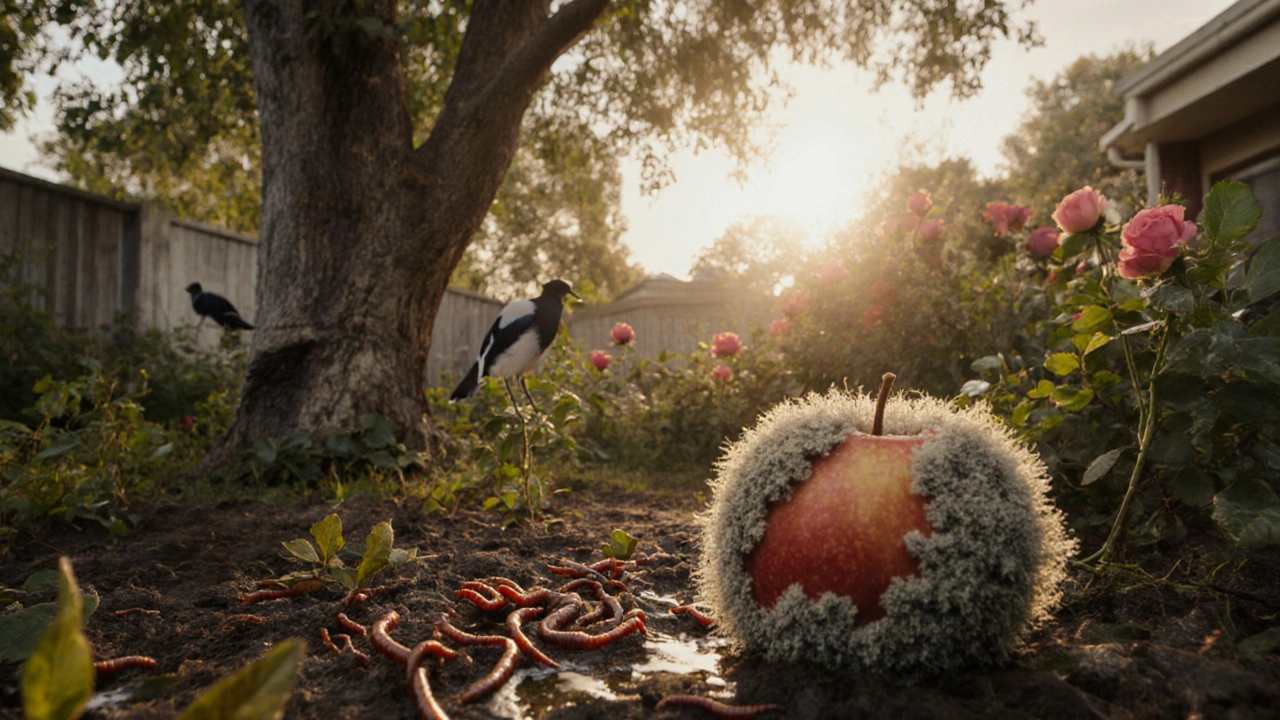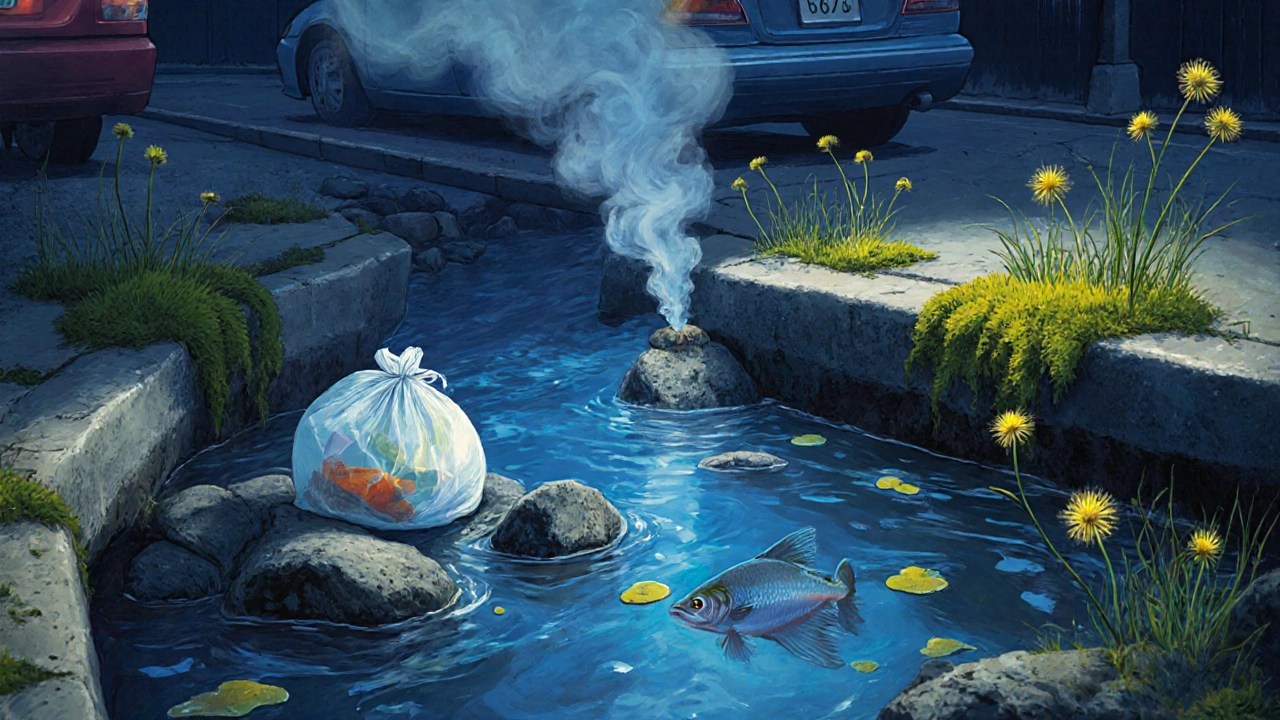What Are the Two Groups of Things in Our Environment?
 Nov, 5 2025
Nov, 5 2025
Biotic vs Abiotic Factor Quiz
Environmental Classification Challenge
Test your understanding of biotic and abiotic factors from the article. Each question presents a real-world example from your environment. Select the correct category.
Question 1 of 5
Question 1
Is a human considered biotic or abiotic?
Think about the world around you-the air you breathe, the trees in the park, the plastic bottle in the bin, the water in the river. Everything in your environment fits into just two basic groups. No exceptions. No gray areas. These two groups are the building blocks of every ecosystem on Earth, from the Amazon rainforest to the sidewalk crack where a weed grows. They’re called biotic and abiotic factors.
Biotic: The Living Things
Biotic factors are the living parts of an environment. That means anything that is alive right now, or was alive recently and still affects the system. This includes plants, animals, fungi, bacteria, and even the tiny microbes you can’t see with your eyes.
Take a backyard in Melbourne. The gum tree outside your window? Biotic. The magpies squawking in the morning? Biotic. The earthworms turning the soil under your rose bushes? Biotic. The mold growing on last week’s forgotten apple? Also biotic. These organisms interact with each other in complex ways-predators hunt prey, plants compete for sunlight, fungi break down dead matter and recycle nutrients.
Biotic factors don’t just exist-they change their surroundings. A beaver builds a dam and turns a stream into a pond. A forest fire, started by lightning or a carelessly tossed cigarette, wipes out trees and opens the ground for new growth. Even humans, as a biotic factor, reshape entire landscapes. We plant crops, cut down forests, and pollute rivers. Our actions ripple through the living world.
Abiotic: The Non-Living Forces
Abiotic factors are the non-living parts of the environment. They don’t grow, reproduce, or die. But they control whether life can exist at all. These are the physical and chemical conditions that shape where and how organisms live.
Think about temperature. In Melbourne, winter nights can drop below 5°C. That’s too cold for many tropical insects to survive. Rainfall? The amount of rain each year determines whether a region becomes a desert, a grassland, or a rainforest. Soil pH affects which plants can grow. Sunlight drives photosynthesis. Wind carries seeds and pollen. Water chemistry-like salt levels in coastal areas-limits what fish can live where.
Even human-made things count as abiotic. Concrete sidewalks, plastic waste, car exhaust, and industrial chemicals are all abiotic. They don’t breathe, but they still change the environment. A plastic bag in a creek doesn’t grow, but it kills fish. A road heats up under the sun and changes local temperatures. These are abiotic forces with living consequences.
How They Work Together
Biotic and abiotic factors don’t operate in isolation. They’re locked in a constant dance. One changes, and the other responds.
Take drought. A dry spell (abiotic) reduces water in the soil. Plants (biotic) struggle to grow. Animals that eat those plants (biotic) start moving or dying. Birds that rely on those animals for food leave the area. Meanwhile, the dry soil becomes more prone to erosion, and dust storms increase (another abiotic change). It’s a chain reaction.
Or consider ocean acidification. Humans burn fossil fuels, releasing carbon dioxide into the air (abiotic change). The ocean absorbs some of it, making seawater more acidic (another abiotic shift). Corals (biotic) can’t build their shells in acidic water. Fish that live among coral reefs lose their homes. The whole marine food web starts to collapse.
This interdependence is why you can’t fix one part of the environment without affecting the other. Planting trees (biotic) helps absorb carbon (abiotic). Cleaning up plastic (abiotic) saves turtles (biotic). You can’t separate the two.

Why This Matters for Everyday Life
Understanding these two groups isn’t just for science class. It helps you make smarter choices.
When you choose to recycle, you’re reducing abiotic pollution-less plastic in landfills, less chemical runoff into waterways. When you support local farmers who avoid pesticides, you’re protecting biotic life-bees, earthworms, birds, and soil microbes that keep the land healthy. When you walk instead of drive, you’re lowering emissions (abiotic) and reducing noise that disturbs wildlife (biotic).
Even small actions matter. Leaving your lawn a little wild lets native plants (biotic) grow, which supports insects (biotic), which feed birds (biotic). That’s not just beauty-it’s ecosystem function. A patch of native grasses, a compost bin, a rainwater tank-they all connect the living and non-living parts of your environment.
And when you see a polluted creek or a cleared patch of bushland, you can ask: What abiotic factor changed? Was it runoff from a road? Was it a new housing development? What biotic life is now missing? This way of thinking turns observation into action.
Common Misconceptions
Some people think only animals and plants are part of the environment. They forget about rocks, water, and air. Others think anything natural is automatically good, and anything human-made is bad. That’s not true.
A natural forest fire is biotic and abiotic-it’s part of the cycle. But a wildfire started by a discarded cigarette? Still the same process, just caused by human behavior. A river is abiotic, but if it’s dammed and polluted, the damage is human-made. The line isn’t natural vs. artificial. It’s living vs. non-living.
Another myth: “If it’s not alive, it doesn’t matter.” But abiotic factors are the stage. Without the right temperature, water, and soil, no living thing can survive. You can’t save the trees if the soil is poisoned. You can’t protect the birds if the air is full of toxins.
Real-World Examples Around You
Look out your window right now. What do you see?
- A bird singing? Biotic.
- The concrete path it’s standing on? Abiotic.
- The rain puddle in the gutter? Abiotic.
- The moss growing on the side of the gutter? Biotic.
- The car parked outside? Abiotic.
- The dandelion pushing through the crack in the pavement? Biotic.
Everywhere you go, it’s the same. A shopping center? Concrete, glass, and metal (abiotic) with pigeons, ants, and cockroaches (biotic). A farm? Tractors and fences (abiotic) with cows, wheat, and earthworms (biotic). Even your kitchen-plastic containers and stainless steel (abiotic) with the mold on your leftover cheese (biotic).
You’re never far from both groups. They’re always together.

What Happens When One Group Is Disrupted?
When abiotic conditions change too fast, biotic life can’t adapt.
Think of coral reefs. They’ve survived for millions of years. But in the last 30 years, ocean temperatures have risen just 1-2°C. That small abiotic shift has killed nearly half the world’s coral. The fish, crustaceans, and algae that depended on them? They’re vanishing too. It’s not that the coral died because it was sick. It died because the water got too warm.
On land, urban heat islands-cities that are several degrees hotter than surrounding areas because of asphalt and buildings (abiotic)-force animals like koalas to move. Koalas need cool eucalyptus leaves. If the leaves dry out or the trees die from heat stress, the koalas starve or get dehydrated. They’re not being hunted. They’re being pushed out by a changed environment.
These aren’t distant problems. They’re happening here. In Melbourne, hotter summers and drier winters are stressing native plants. Some species are disappearing from parks where they once thrived. The birds that ate their seeds are following them-or vanishing.
How to Use This Knowledge
You don’t need a science degree to use this. Just start noticing.
- When you see litter, ask: Is this abiotic? And what biotic life is it harming?
- When you buy something, ask: Was it made with materials that pollute the air or water? That’s an abiotic impact.
- When you plant something, ask: Will this support local insects or birds? That’s helping biotic life.
- When you vote or speak up about development, ask: Will this change the soil, water, or air? Those are abiotic changes that will hurt living things.
Every choice you make connects to one or both groups. And when you understand that, you stop seeing the environment as something “out there.” You start seeing it as something you’re part of-every day, in every action.
Are humans considered biotic or abiotic?
Humans are biotic. We are living organisms. Even though we build cities and create pollution, we grow, reproduce, breathe, and die like all other living things. Our impact on the environment is powerful, but that doesn’t change our classification. We’re a biotic factor that heavily influences abiotic conditions like air quality, soil health, and water cycles.
Can something be both biotic and abiotic?
No. Something is either living or not. A dead tree is still biotic because it was once alive and continues to affect the ecosystem-providing habitat, decomposing into nutrients, and altering soil structure. Once it fully breaks down into minerals and gases, those components become abiotic. The transition happens as the material loses its biological function, not its physical form.
Is sunlight biotic or abiotic?
Sunlight is abiotic. It’s energy from the sun, not a living thing. But it’s essential for nearly all biotic life. Plants use sunlight to make food. Animals depend on plants. Without sunlight, the entire chain of life collapses. It’s a non-living force that makes life possible.
Why is soil considered abiotic even though it has living organisms in it?
Soil itself-the minerals, sand, silt, and clay-is abiotic. But it contains biotic elements like bacteria, fungi, worms, and insect eggs. When scientists talk about soil as an abiotic factor, they mean its texture, pH, and nutrient content. The living parts are separate biotic factors living within it. Think of soil as the stage, and the microbes as the actors on it.
Do biotic and abiotic factors change over time?
Yes, constantly. Seasons change temperature and rainfall (abiotic). Animals migrate or reproduce (biotic). Forests grow, burn, or are cut down. Human activity accelerates these changes. Climate change is a fast-moving shift in abiotic conditions-rising CO2, warmer oceans, extreme weather-that’s forcing biotic life to adapt, move, or die. The relationship between the two is always evolving.
What Comes Next?
If you want to understand your environment better, start by mapping the two groups around you. Walk through your neighborhood. List everything you see. Sort it into biotic and abiotic. You’ll be surprised how much you notice.
Then ask: What’s changing? Is the air cleaner? Are more birds returning? Is the creek clearer? Those are signs of balance-or imbalance.
You don’t need to fix everything. But if you understand the two groups, you’ll know where to start. And sometimes, that’s enough.